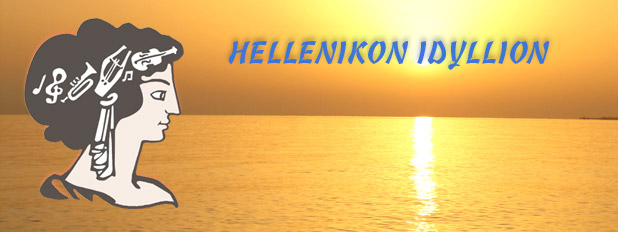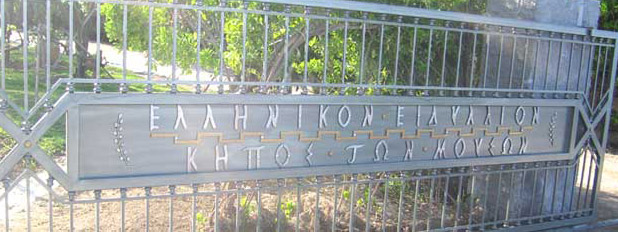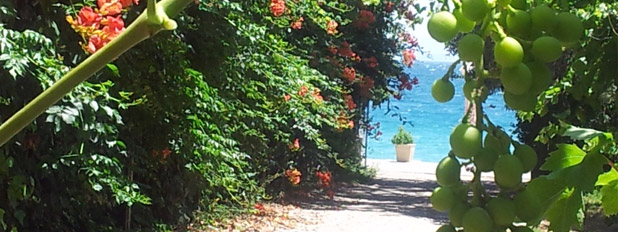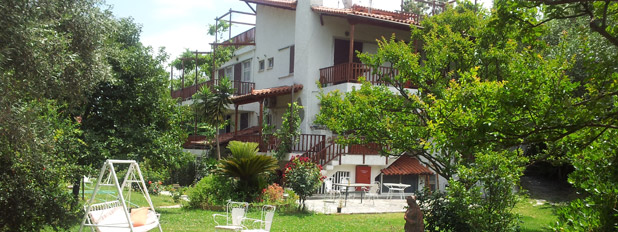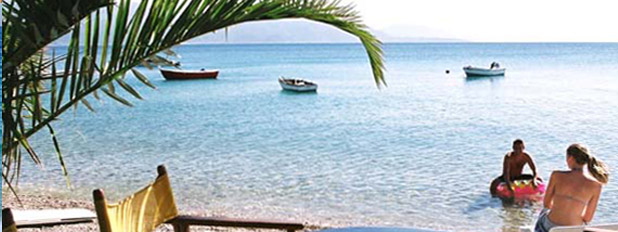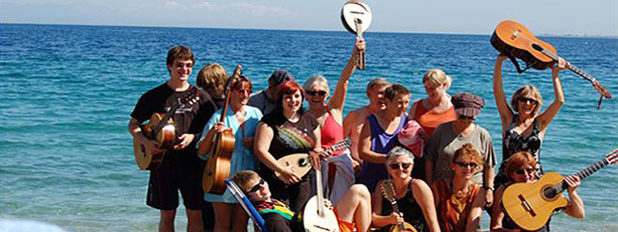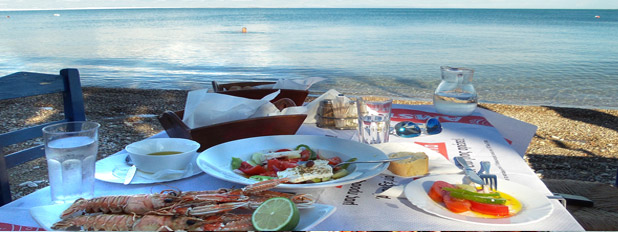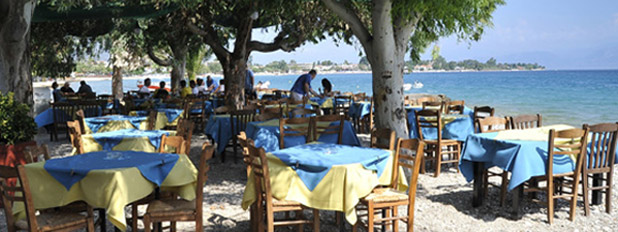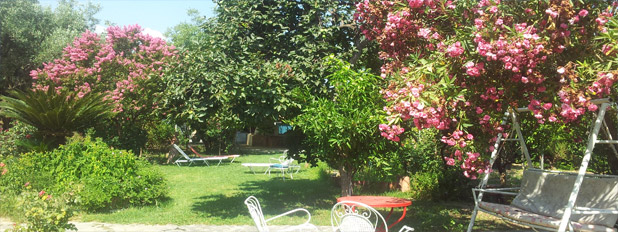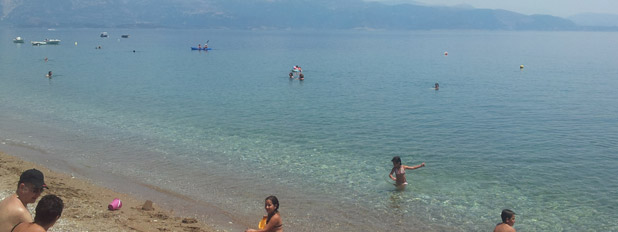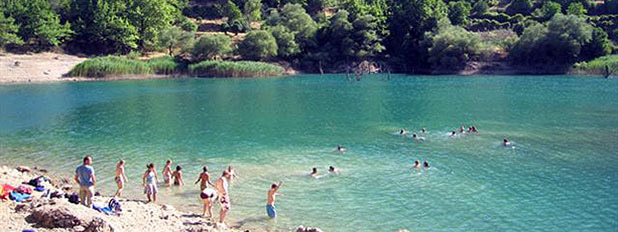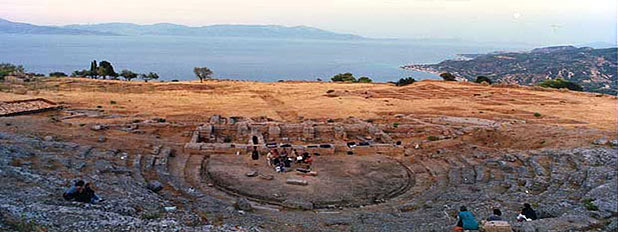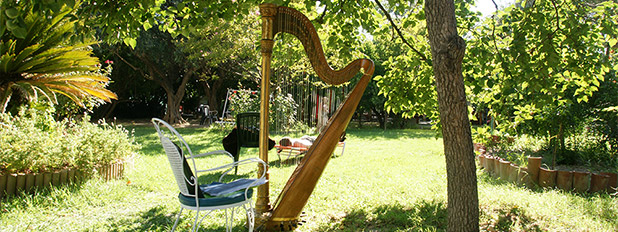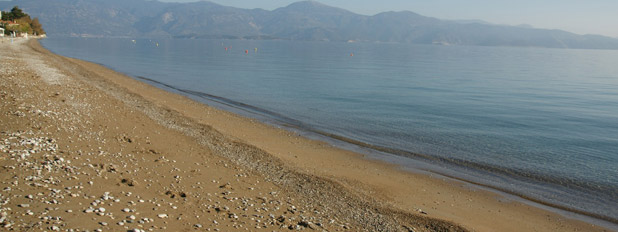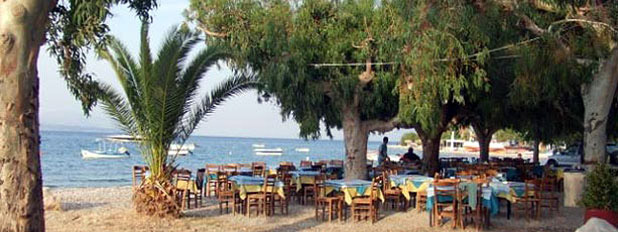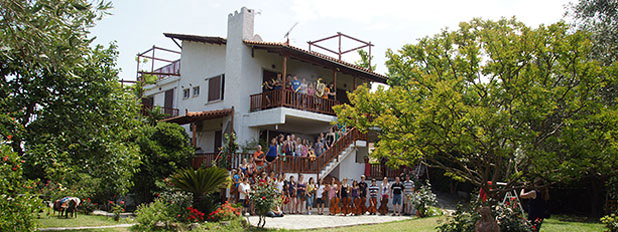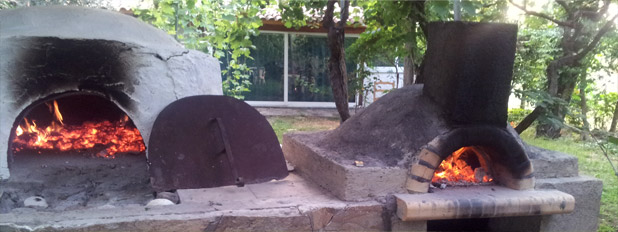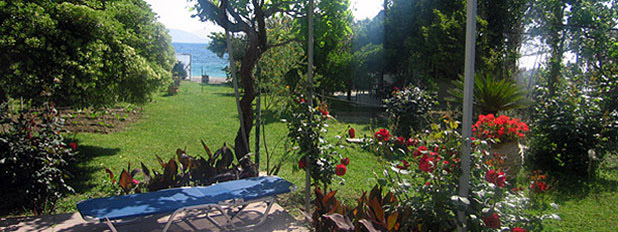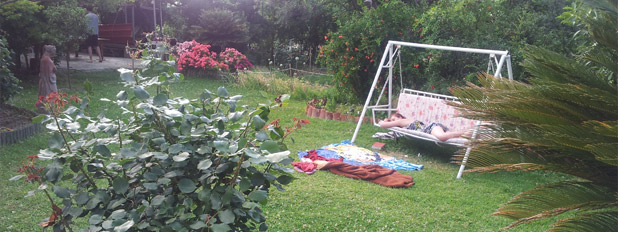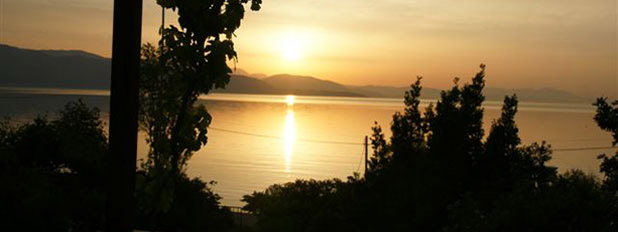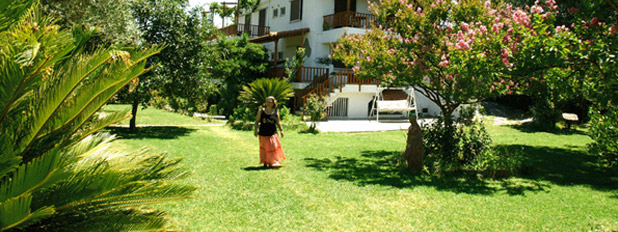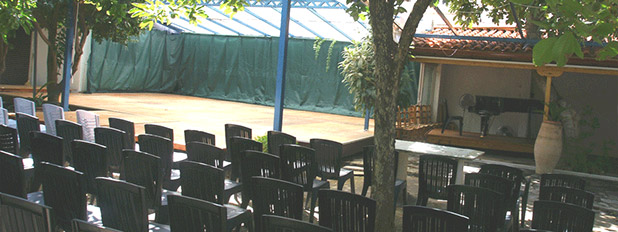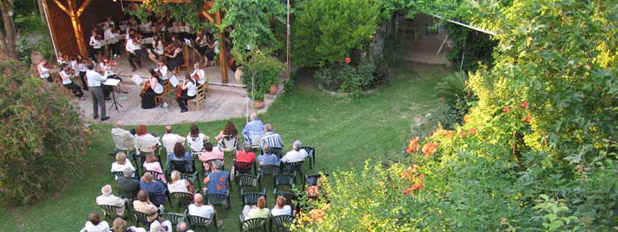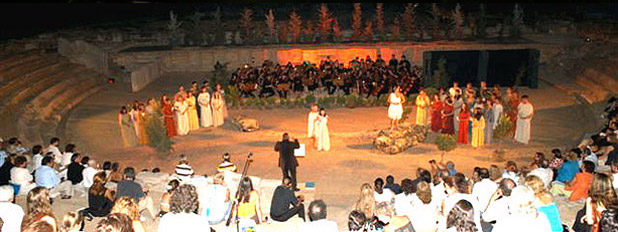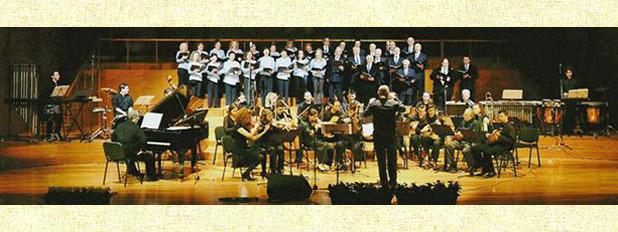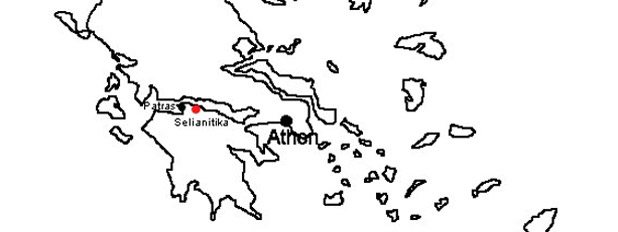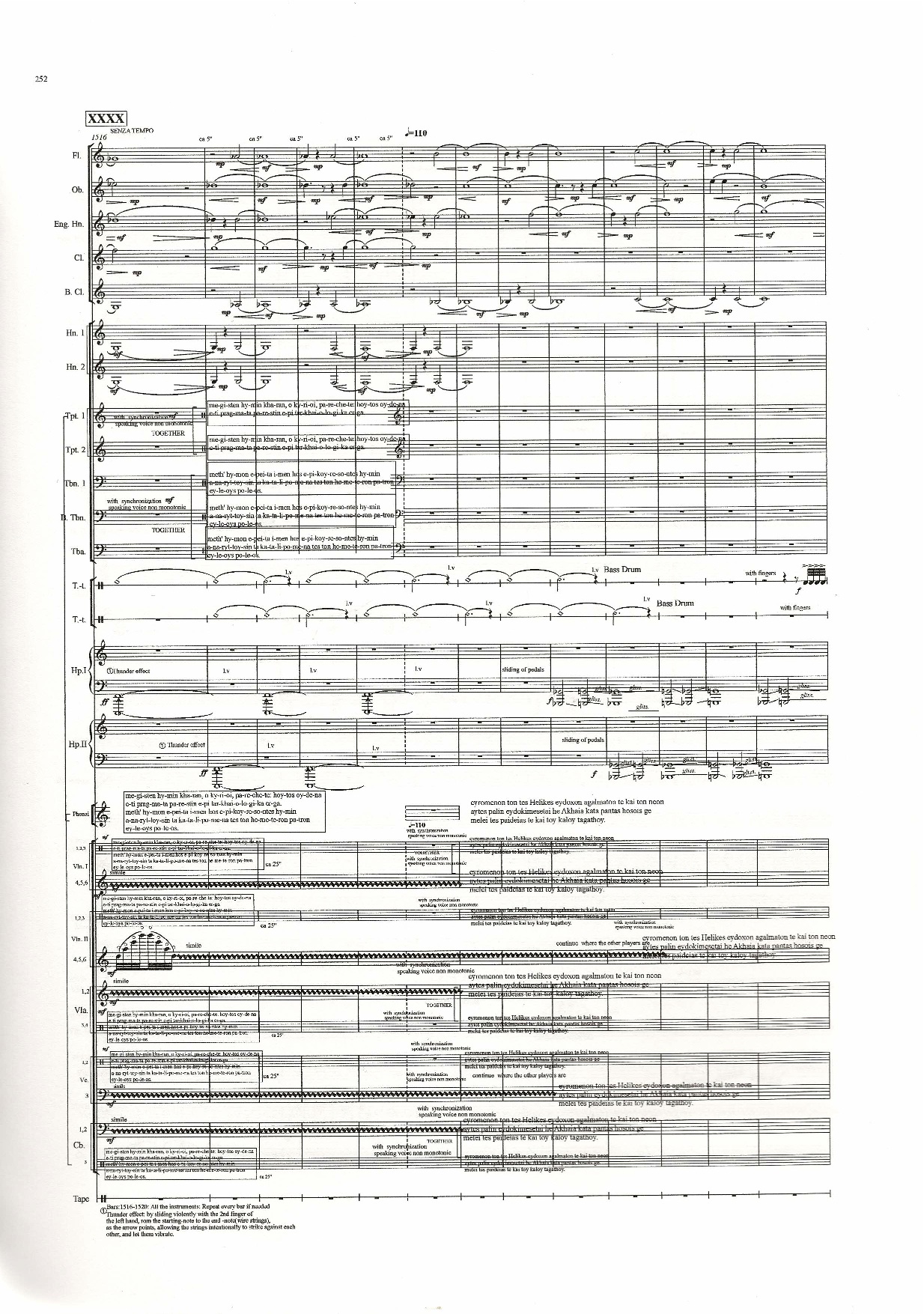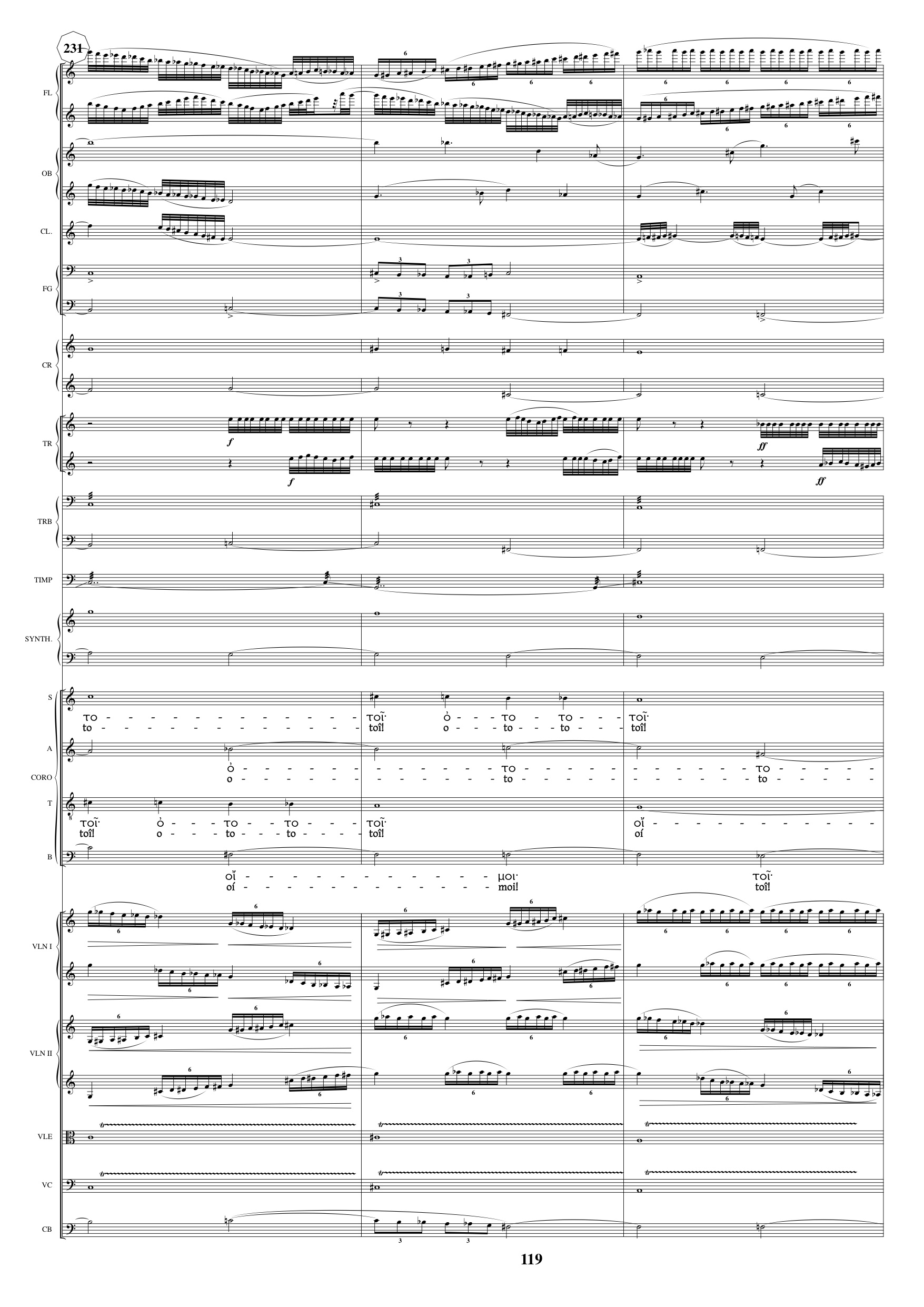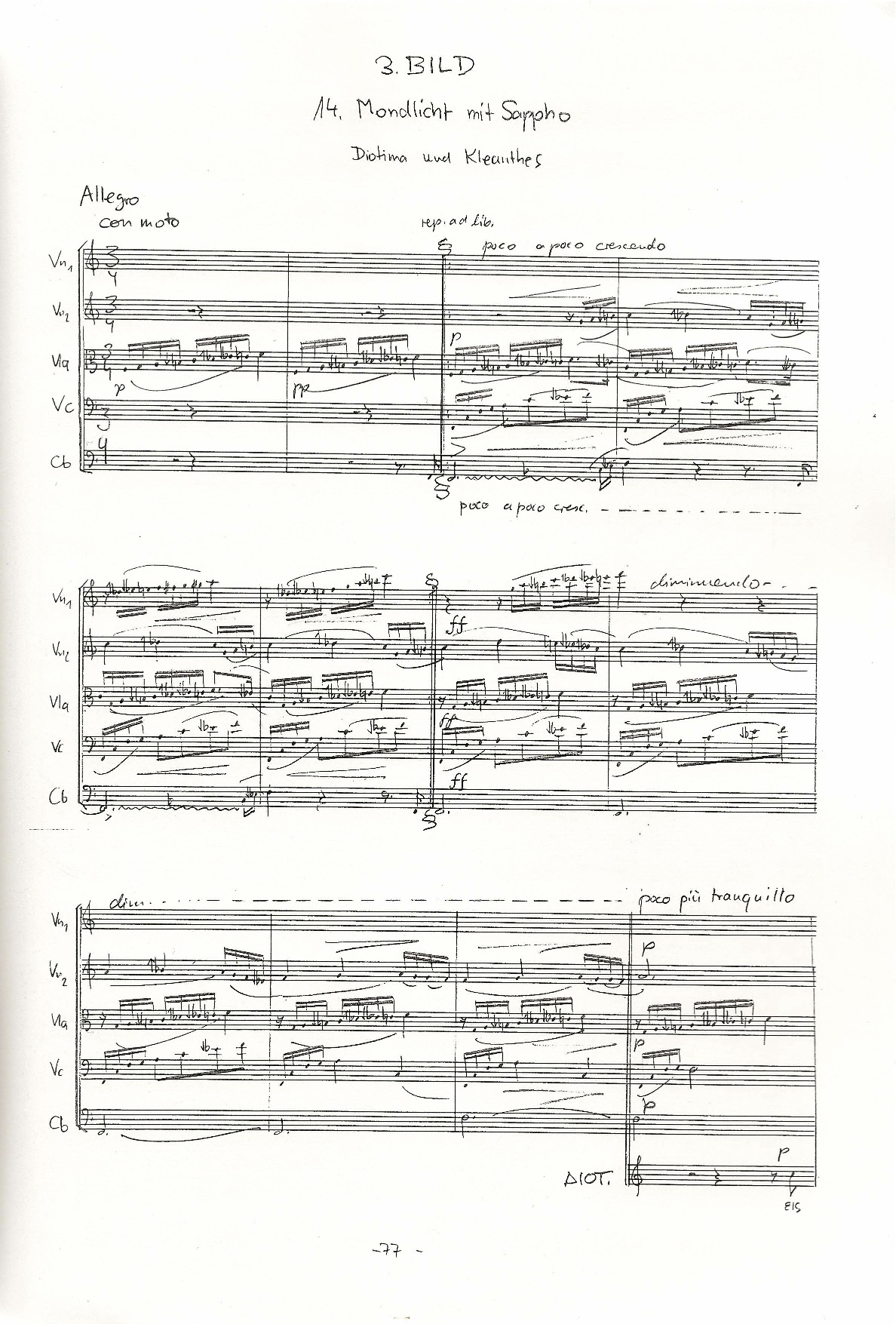Projects
Philosophize in Ancient Greek Choirs, orchestras, creative groups
Projects
Philosophize in Ancient Greek Choirs, orchestras, creative groups
Philosophize in Ancient Greek Choirs, orchestras, creative groups
2003 2005 2010 2011 2016 2017 2018 2019
↓International Composition Competition
↓Jury
↓Comment by Alois Springer [Tania Sikelianou]
↓Comment by Alois Springer [Herman Rechberger]
↓Herman Rechberger about his Werk
↓Comment by Alois Springer [Johannes Kotchy]
↓Johannes Kotschy about his Werk
↓Comment by Alois Springer [Michail Andritsopoulos]
International Composition Competition
Helike Athanatos (Helike Immortal), the story is based on an idea of Andreas Drekis, Text and literatur in ancient Greek by Franz Knappik.
Andreas Drekis Award Composition
For more details about the composition competition in past click here.
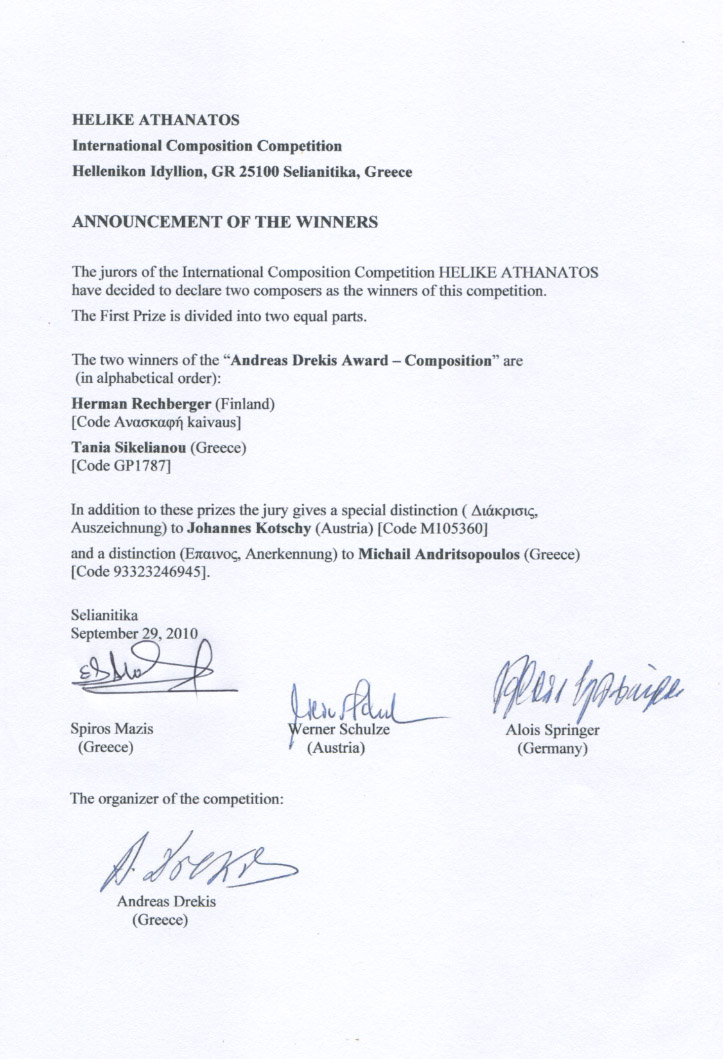
Jury
Dr. Spyros Mazis, Komponist (Griechenland)
Univ-.Prof. Dr. Werner Schulze, Professor für Musik und darstellende Kunst (Österreich)
Alois Springer, Chefdirigent (Deutschland)
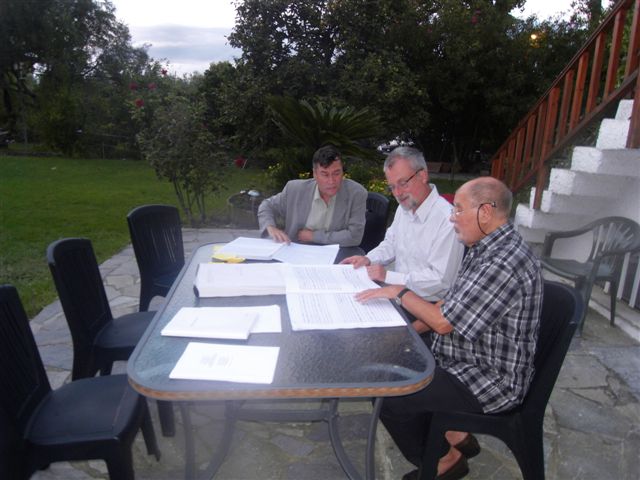
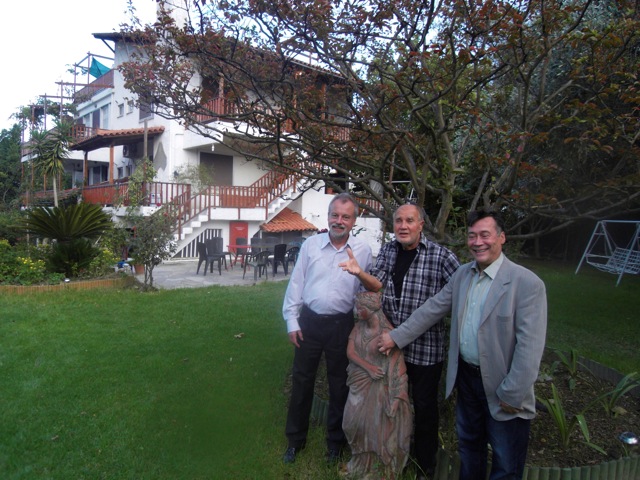
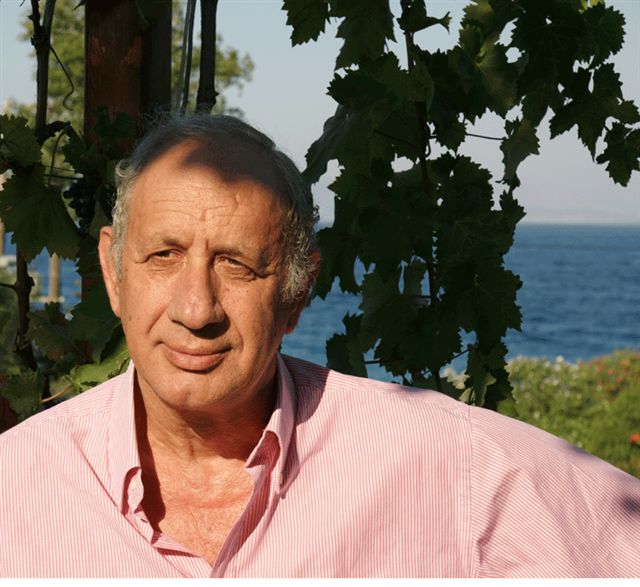
Andreas Drekis, head of jury, founder and leader of the international musical and cultural centre Hellenikon Idyllion, Greece
Commentar by Alois Springer
Score GP 1787 by Tania Sikelianou from Griechenland (first prize)
Her website
www.taniasikelianou.com
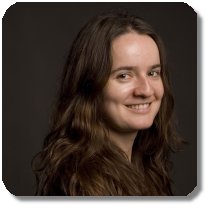
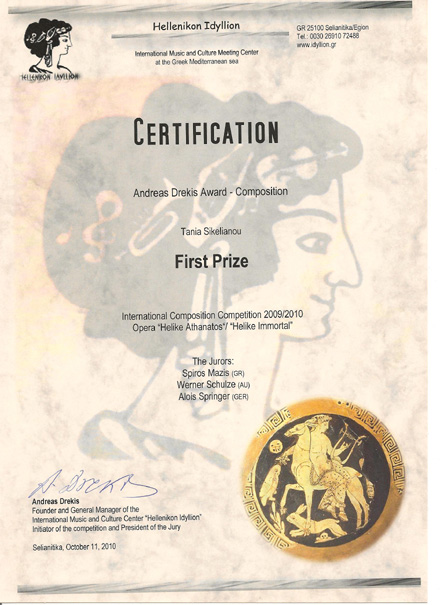
As a chief conductor of major orchestras, even 5 times first place winner and one year working experience as assistant to Leonard Bernstein, not least from my literary, compositional experience, I do know the difficulty of the particular art to put an end to a recently completed work. If only every creative mind may want to bring his work to completion. Even the great Leonard Bernstein struggled with this final decision again and again. I mention this with regard to the temptation to add retouching in the scores.
Working on their own first and then consulting with the other members of the jury, the jury agreed on the main criteria.
The music of the score stands with its refreshing, contemporary relevance and the demonstration of diverse sounds in the middle of the recurring drama as well in the modern life as in the memory of great dramatic events in the past, with its ups and downs. They are musically empathized and observed to the smallest detail, creating new sound with the diversity of the modern orchestral sound. Turned into sound, it can be made accessible to future listeners.
This shows a talent for musical and dramatic presentation without sensationalism, which entitles high hopes.
The score in C features a unique clear-textured sound. In spite of so many unknown sounds this music will move the audience in its clarity, sensibility and a boundless imagination and get through to the audience directly, without translation, quasi intravenously. Because of this knowledge I have given the score GP1787 - in connection with the announcement - my voice and the well deserved first prize. The other competitors have also demonstrated great achievement and will find their way to reach people positively with their music.
My other reasons for giving this score the award of a first prize, without going too much into details, are the following:
It is almost the Dionysian pleasure in using the sonic possibilities of a modern orchestra body such as the use of tenor Records -bass Records and two harps, recorders. It is the flexible-free treatment and interweaving of voices with the orchestra as well as the improvisational element of tonal coloration that gives the players freedom, which - like freedom always does - is only socially involved in a predetermined period of time. This is the reason why there is formed an individual lively coloring caused by individual instruments without fixed notation and a vitality in spite of recurring repetition.
Choir and choral speech contribute to the tension, with its catchy repetitions - alternating men -, the vivid varying solos, some with voice singing.
Orchestra Instrumentation: blocky, well-defined identifiable sound blocks.
The high chamber music entitlement of the score demands to make the Work in its quality accessible to the public, not only in open-air performances but also in ambitious halls.
Overall impression: Consistent, clear, memorable, clear sounds, good dramatic tonal change of scenery, the variety of possibilities of sounds used by excellent instrumentation. Highest demands!
Alois Springer
Comment by Alois Springer
Anaskafi-Kaivaus Score by Herman Rechberger from Finland (first prize)
His website
http://sonopt.pp.fi/
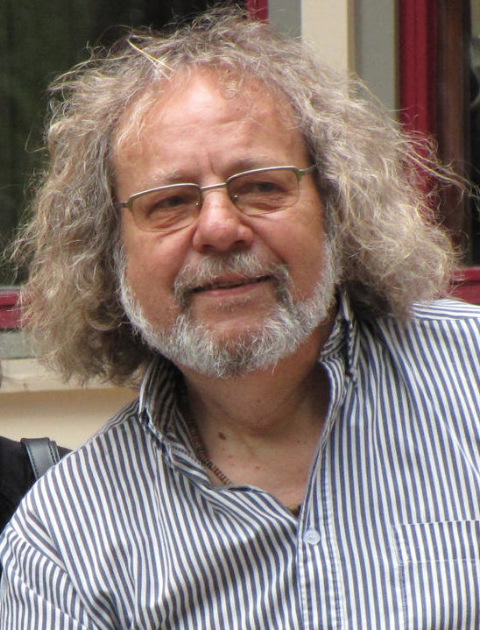
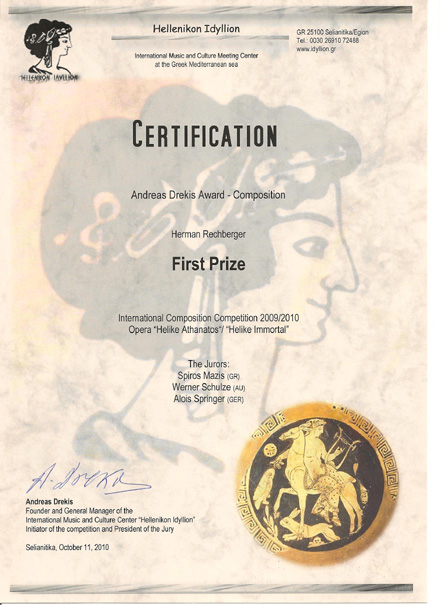
As a chief conductor of major orchestras, even 5 times first place winner and one year working experience as assistant to Leonard Bernstein, not least from my literary, compositional experience, I do know the difficulty of the particular art to put an end to a recently completed work. If only every creative mind may want to bring his work to completion. Even the great Leonard Bernstein struggled with this final decision again and again. I mention this with regard to the temptation to add retouching in the scores.
Working on their own first and then consulting with the other members of the jury, the jury agreed on the main criteria.
The music of your score will reach people almost immediately in its clarity, simplicity and modesty, without translation - quasi intravenously. Because this knowledge I gave the score No. 2 - in connection with the announcement - my voice, the well deserved first prize.
The other competitors have also demonstrated great achievement and will find their way to reach people positively with their music.
Other reasons for giving this score the award of a first prize are the following ones:
The music of your score is partly conventional, partly minimalistic, but it reaches the audience directly in its clarity and simplicity, without translation - quasi intravenously. Because of this knowledge of mine I have decided that your score is worthy for the first Price.
The repetitive singing in the work, which partially resembles litany, emphasizes to a large extend the word and the Greek text. It leaves space for the agogic design to the conductor and the performers, which can combat impressively a mistakenly rising boredom.
The performance, with its spatial requirements and needs will show what retouchings may be absolutely necessary to bring the work to the highest level of development.
The rhythm of the chorus is so catchy that even the most uninvolved person could not help himself to become an actor. The simple handicraft excellent orchestration and instrumentation in conjunction with the choir and the soloists is because of skillful doubling of the votes clear, mutually supportive and thereby gives both the lighter and the heaFour parts of the score the for the joy of playing and making music necessary zero gravity.
The challenge of the score is in the facility, not in the more difficult passages.
The vocal soloists are easily realizable by the singers, they compel as well highlights in their necessary development as relaxations, so that the listener can be taken internally in the ebb and flow of movement.
The dance will still have to prove its effect on the audience in practice.
The overall impression is: consistent, long lasting comprehensible, impressive by simple structure and therefore close to the audience, effectively representable although not provocative but that's the reason why it is challenging and has got performance value- meaningful for audience and performers.
Alois Springer
Herman Rechberger about his work
Ancient languages and their cultures have been always a challenge for me. Let me put it like that: Languages contain for me clearly all musical parametres: Melody, pitch, intonation, phrasing, rhythm, expression and to a certain extend even harmony. Languages posess, like music, a locigal structure, a grammar, a vocabulary.
1996 I wrote my first church opera after a libretto written by myself in Latein. In numerous other vocal works I have used texts in Sanskrit, the Inka language Nahuatl, Ewe, Chinese, Akkadian, Old Egyptian and Koïné. Though, when receiving the attic libretto, I thought "Why not an opera in Ancient Greek?"
The libretto by Franz Knappik (inclusive quotations from Sappho and Alkman, the documentations of the earthquake by Strabon and Pausanius, as well as a love-poem in New Greek by Andreas Drekis) is in ist structure a successful combination of Old and New and ist dramaturgy offers a variety of compositional solutions. When building the concept of my version of "Helike Athanatos" I was lead by the idea of an open air performance in an ancient amphitheatre. This is partly also the rerason why the the music is rather archaic - with a minimalistic touch - than modernistic. The tone material uses mainly greek modes (dorian, phrygian, locrian) but also scales from folk music and rebetika (hijaz, kartzigar, neverezi, sabah).
The orchestration contains also a Synthesizer, as well as a Santouri and a Laouto, which guarantee in many places of the score a "greek flair". The use of a single, almost solistic clarinet in the orchestra gives sometimes the illusion of folkmusic from Epirus. The choir has, like in ancient plays, mostly a narrative role (e.g. in the documents of Strabon and Pausanius), in some other spots ritual (the feast in honour of Poseidon) and lyrical functions (poem of Alkman).
Very accurately I treated the rhythm of the Ancient Greek language. During my composing process, I began with analyzing each sentence. The rhythm of the entire opera is controlled by the rhythm of the language.
Some of the parts in the libretto are treated molodramatically. That means, that the dialogues (e.g. in the symposium and the archaelogic congress are spoken, with instrumental underpainting and commentaries. Thus the instruments are getting involved in the spoken dialogues. The roles are clearly designed: There are actually only two "surviving" protagonists (Kleánthes [baritone] and Diotíma [mezzosoprano]. Most of the other roles are metamorphoses (so, the host of the symposion changes later into the chairman of the archaeologigal congress, the two philosophers take the personage of a banker and a politician). Dora and Steve with their passion for archaeology are in a certain sense relatives of the loving couple Diotíma-Kleánthes (the musical link is the returning theme of the vase).
Maybe one of the most difficult tasks was to create a musically expressive scene of an earthquake. Such a destructive event is normally a matter of only a few seconds. After listening to many recording of earthquakes, I came to the conclusion, that the only way to reflect such a natural desaster, is to create a sound-colour-composition including the emotions of those concerned with it. Therefore I have in the Tsunami part given the choir an instrumental part, which should, at the same time, be understood as a lament. May my opera Helike Athanatos through an open-air performance pay a well-deserved tribute to the rediscovery of this, once so glorious city.
Instrumentation of the orchestra
- Two flutes
- Two oboen
- One clarinet
- Two bassoons
- One E-Piano (with MIDI)
- One Laouto, or substituted with guitar (alternative part available), this substitution should only be considered if the original instrument is not available. The color of this instrument is important, because it is close to the sound of the antique Lyra.
- One Santouri (Dulcimer), or substituted by harp (single pedal harp is suitable)
- Timpanis
- Two horns
- Two trumpets
- Two trombones
- Six first violins
- Four second violins
- Three violas
- Two violoncellos
- Two contrabasses
Roles of the choir
- Diotima (the adored lover) mezzosoprano
- Kleanthes (lover of Diotima)— high baritone
- Estiarkhes (host of the symposiums) voice
- Dora (greek archaeologist) singing actor with easy vocal part
- Stephanos (cooperating archaeologist) voice
- Hypatia (philosopher) voice
- Philosophos I+II (philosopher 1+2) voices
- Kyrios I+II (gentlemen 1+2) tenor
- Kefale (chairman) voice
- Agroteros (farmer) voice from the choir
Orchestra at least 34 people,choir at least 16 people, 4 vocal soloists, 8 speaking parts, all in all at least 62 persons. For any further information or if there are any more questions on the works and/or their realization, we can also get you in touch with the composers
Comment by Alois Springer
Score M 10536 by Johannes Kotchy from Austria (special distinction prize)
His websites
www.newkeyboard.de
www.Natureton-musik.dewww.ekmelic-music.org
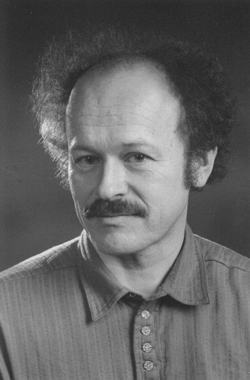
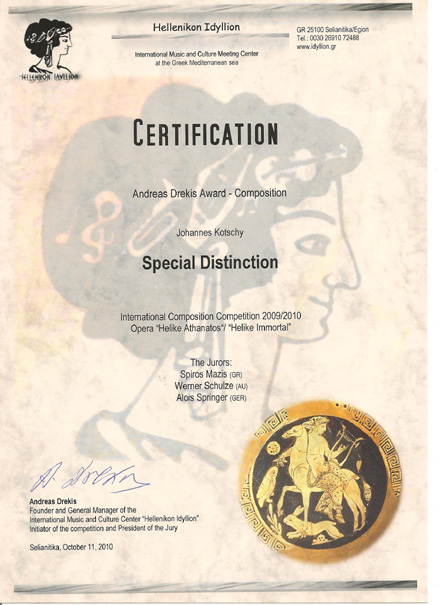
As a chief conductor of major orchestras, even 5 times first place winner and one year working experience as assistant to Leonard Bernstein, not least from my literary, compositional experience, I do know the difficulty of the particular art to put an end to a recently completed work. If only every creative mind may want to bring his work to completion. Even the great Leonard Bernstein struggled with this final decision again and again. I mention this with regard to the temptation to add retouching in the scores.
Working on their own first and then consulting with the other members of the jury, the jury agreed on the main criteria.
So it is even more amazing to show the plant, that is still growing, the unborn child to a new pair of eyes and to hope for the judgement by a jury.
Considering the great unfinished works of the world literature like the B minor D 759 of F. Schubert or the 10th Symphony by G. Mahler or A. Bruckner's 90th Symphony in D minor, for your "unfinished", nothing stands in the way to finally complete your unfinished work.
Even the handwriting in your score is inviting to the exploration and exciting discovery of unknown paths. And there is a lot to discover.
Apart from your craftsmanship, which is the requirement for a realization of your own imagination, the totally homogenous general representation of the work is immediately visible, from the first to the last note. It is a very personal and unique musical manuscript and language and this way it is immediately recognizable. A great advantage.
This impression is intensified by the Dionysian sound idea of a large string apparatus of at least 8, 6, 4, 2-3 strings. Because the strings form the sound, and their sound can be formed. On the other hand, the soloists-winds should have soloistic skills.
But this demand is supported by the score with its creative wide-ranging ideas. The soloists give this score the necessary individual brilliance by their individual abilities and emotions in the construction of the highlights of the drama and the following calming down. This should be easy after the beautiful course of the musical lines. They would be the splendor of the string sound you demanded. This is required by your score that asks in its complexity and at the same time simplicity for the engagement with it during intensive rehearsals. The musicians should be professionals to perform the work in high quality.
The composeralso leaves the twelve-tone scale at certain intervals, which gives the whole thing an exciting appeal of ancient and modern tonality.
You show all these possibilities for broad-based drama and lively breathing dynamics with clear signs. The choirs - alternating men and women - and the lyric-dramatic solo parts leave in the uniqueness of their statement, with the development of tension and distinct accents up to highlights no doubt about the imagination and the creative will of the composer. The congenial connection with the libretto seems especially successful.
The same applies for the both conventional, but because of that also flexible tempo designations such as Allegro energico or Moderato, ma non moto, which leave interpretive space depending on the particular situation of the performance. This would be relevant especially for open-air performances that are indeed realizable in a desirable way if the details are payed attention.
All this is now waiting for the completion and would be possibly award-worthy of a first prize. For now only one thing remains to be said:
For the creative process of your work career, I wish you the creative restlessness, but also patience, which is necessary to come to rest.
In this way, a high level of recognition and appreciation for your work by the jury is guaranteed to you.
Alois Springer
Johannes Kotschy about his work
Three things belong to my music: material, craft and imagination. Material means notes - not only the (few) twelve semitones of our occidental music, but all pitches you can imagine. Craft means the special knowledge about acoustic interrelations of tones, pitches and sounds. And imagination is my personal contribution to my compositions, it serves for creative action. All experiences and feelings I have are involved, whether they come from literature, painting, arts, from nature, or from human beings and their activities, and deeply from inside. It is my aim to contact the listener wihout using words or explanations. I hope, my music will be able to transmit sensations that are inexpressible. As Beethoven once said: "From heart - may it touch the hearts."
For any further information or if there are any more questions on the works and/or their realization,we can also get you in touch with the composers.
Comment by Alois Springer
Score 933232469945 by Michail Andritsopoulos from Greece (distinction prize)
His website http://www.thearchitect.gr/projects/mixalis/site/
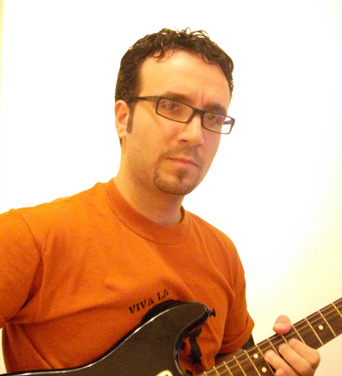
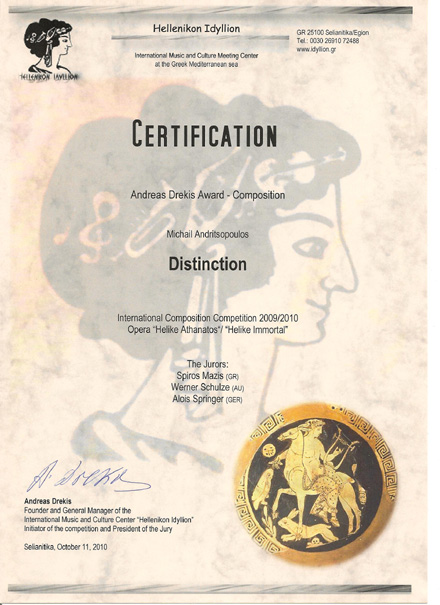
As a chief conductor of major orchestras, even 5 times first place winner and one year working experience as assistant to Leonard Bernstein, not least from my literary, compositional experience, I do know the difficulty of the particular art to put an end to a recently completed work. If only every creative mind may want to bring his work to completion. Even the great Leonard Bernstein struggled with this final decision again and again. I mention this with regard to the temptation to add retouching in the scores.
Working on their own first and then consulting with the other members of the jury, the jury agreed on the main criteria.
The music of your score is clear in its structure and the musical composition is skillful, initially only seeming to be in the conventional type of the four part sentence, but then very impressive in the outstanding elements of the contemporary parts, which give the instruments improvisational freedom of creation. In this way a flexible variety of musical sound creation will surely be reached, which gives the work its vitality.
The solo parts in form of sing-speaking along with the catchy rhythmical parts of the choir are exciting in the development of climax and retirement.
The score is full of great ideas with high demands, which requires a lot: multiple rehearsal time, highly skilled musicians and singers and a confrontation with the work that demands a lot from the orchestra members and especially from the audience. These are for example the intricate movements in the orchestra, the choir and the soloists in connection with the libretto and last but not least in the rhythm section.
Considering these thoughts it resulted difficult for me to give my voice for the award to you, although your work was close to the award of a first Prize.
A high level of recognition and appreciation by the jury for your work is guaranteed to you.
I wish you a realization of high quality for your work.
Alois Springer
Michael Andritsopoulos - analysis of the opera Helike Athanatos
The libretto and the idea of this opera was very intriguing. The need to blend the new with the old was the one which provided me with the harmonic material from the beginning. The old ways and scales gave their sound to the main characters, for example in the first duet of Diotima kai Kleanthis , Diotima sings in a diatonic modal way while the orchestra accompanies in a very busy contrapuntal style and Kleanthis sings in a multimodal way while the orchestra surrounds him with homophonic style.
Old dances give their rhythms but in a more modern style, combined in multirhythmical dances. The use of divisi at the string section in the beginning summons memories of programme music as it magnifies the waves of Poseidon and in the middle an atonal surrounding with contrapuntal action makes an earthquake.
Also intriguing for me was to make it all happen with the minimum of performers so the instruments and the musicians needed for the opera is at least the following :
- 1 piccolo, 1 flute, 1 oboe, 1 clarinet in Bb, 1 Bassoon
- 1 trumpet in Bb, 1 horn in F, 1 trombone, 1 tuba
- 1 harp
- 2 percussionists ( for timpani, cymbals, marimba - not at the same time)
- String section (at least 6 first and 6 second violins and 2 violas …)
- Choir (of at least 8 people -SATB)
- And the soloists : 1 soprano, 2 mezzo sopranos, 2 tenors, 1 bass, 2 baritones
- Orchestra 26 people, 8 vocal soloists, choir at least 8 people (expendable to 16,24,32,etc. people)
All in all at least 42 persons
For any further information or if there are any more questions on the works and/or their realization,we can also get you in touch with the composers
